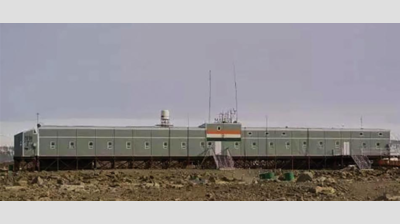ARTICLE AD BOX

Panaji: Marking a major step in the country’s long-term polar roadmap, the Centre has given the financial green light for India’s fourth and most modern research station in Antarctica.
The proposed station, to be called Maitri II, will be established near the existing Maitri base in eastern Antarctica’s Queen Maud Land and is expected to be ready by Jan 2032.The National Centre for Polar and Ocean Research (NCPOR), based in Vasco, received in-principle approval from the department of expenditure earlier this month, enabling it to start detailed planning and design work for the Rs 2,150-crore project.
“This approval allows us to move from the concept stage to preparing a detailed project report, finalising structural designs, and conducting mandatory environmental clearances,” said NCPOR director Thamban Meloth.The upcoming station will replace the ageing Maitri base, commissioned in 1989. Once complete, Maitri II will be India’s largest and most advanced polar facility, equipped with renewable energy systems, high insulation technology, and the capacity to house 140 scientists and technical staff during the summer months.
Around 40 personnel will remain stationed there through the extreme Antarctic winter, with the design allowing sections of the base to be powered down to conserve fuel during low-activity months, said Meloth.The construction process will be complex and time-bound, dictated by Antarctica’s brief summer window of roughly three months each year. “We anticipate the project to take multiple seasons,” Meloth said.
“Earlier stations like Dakshin Gangotri were built in one season, but that is no longer feasible given the scale and environmental norms.”NCPOR has already completed an international architectural design competition for the new station. The selected design will now be developed into a full-scale structural blueprint, followed by wind-tunnel testing to ensure stability in high-wind zones. A comprehensive environmental evaluation will be prepared and submitted to the Antarctic Treaty Consultative Meeting for clearance—a mandatory step under international protocol.Meloth said a consortium of companies will be hired through competitive bidding to execute the construction, with the master plan and consultancy phase expected to take 18 to 24 months. “Our goal is to build a modern facility that lasts over 30 to 45 years. We are not hurrying this process,” he said.Located within a 2-km radius of Maitri, the new site in the Schirmacher Hills region has been chosen for logistical efficiency.
Existing road routes, stretching nearly 100km from the coast, will minimise the environmental footprint and ease the transport of materials, said Meloth.India’s Antarctic journey began with Dakshin Gangotri, established during the 1983–84 expedition, but later decommissioned after being buried in ice. Maitri followed in 1989, and Bharati, a modern coastal station, became operational in 2012.

 10 hours ago
6
10 hours ago
6









 English (US) ·
English (US) ·